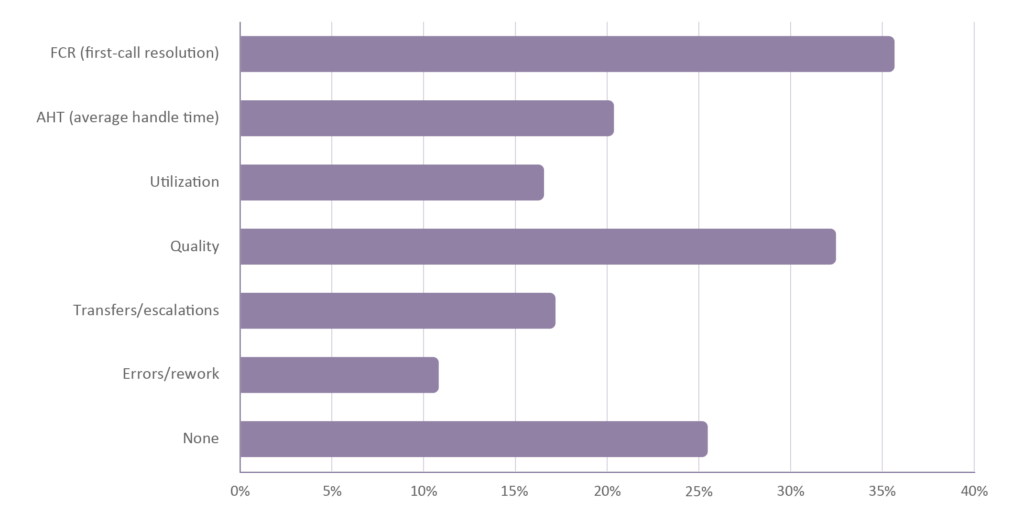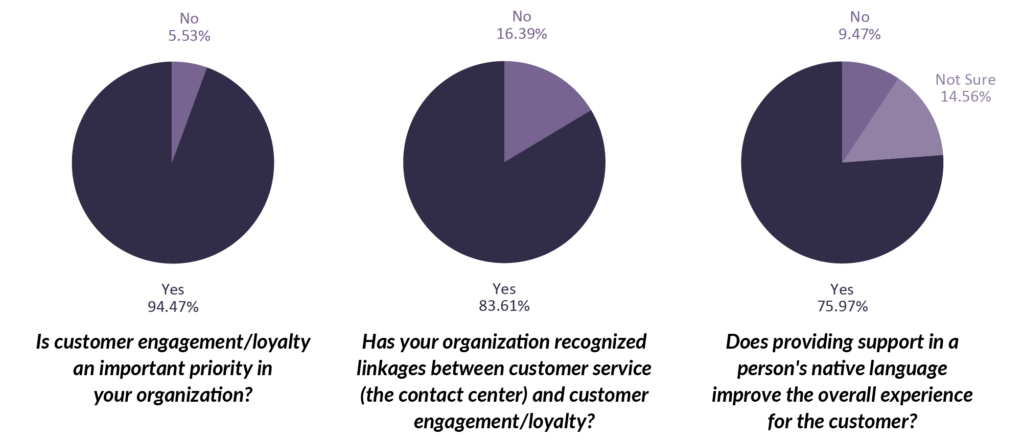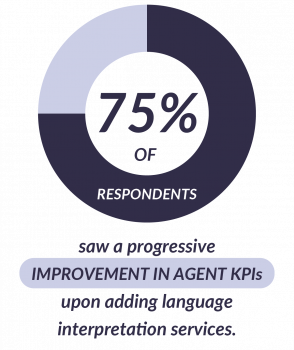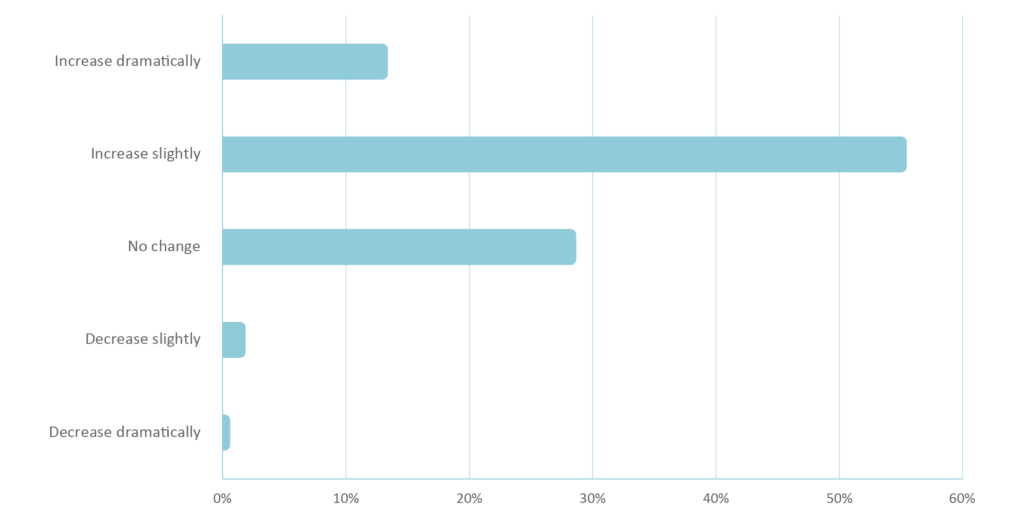Contact centers often need help improving customer engagement and agent productivity and efficiency. Language services such as phone or video interpretation can help your contact center achieve these goals when working with customers who don’t speak English well.
Data from a survey we conducted with over 400 contact center leaders shows that businesses offering multilanguage customer support can improve KPIs. Let’s review what customer experience directors, quality service coaches, retail call center directors, and other contact center leaders have to say about language services:
What contact center leaders think about offering multilanguage support
We found that contact center leaders had different outlooks on language services based upon their current multilanguage support offerings
- Contact centers considering adding language services
- Contact centers already using language services
- Contact centers inhibited from offering language services
Here’s what each group had to say about current or future use of interpretation in their contact centers:
Why contact centers are considering adding language interpretation services
When we asked respondents who were still in the consideration phase, “What is the primary reason you are considering language interpretation services?” a solid third of them responded with ‘higher customer satisfaction’. The top responses include:
- Higher customer satisfaction (CSAT)
- Ability to scale customer base
- Competitive differentiation
- Higher agent satisfaction

Which contact center metrics have been positively impacted by adding language interpretation services?

We asked about the positive impact on key performance indications (KPIs) for contact centers already partnered with a language services provider. After introducing a language interpretation service, call centers reported that first-call resolution (FCR), average handle time (AHT), and overall call quality were positively affected by 36%, 20%, and 32%, respectively:
Why some contact centers say they’re inhibited from formally offering multilanguage support
Many contact centers perceived their volume of non-English speaking callers to be too small to offer multilanguage support. Other inhibitors included:
- Limited budget
- Lack of customer expectations
- Inability to hire multilingual agents
- Internal constraints to manage operations
- Lack of resources to convert materials to another language
Contact center concerns about the quality of language services
If your team has concerns about the quality of language interpretation services, consider this research finding:
82% of contact centers already using interpreters say that CSAT scores for their external interpreters are better than or equal to their internal bilingual agents.

As one Customer Experience Director in the financial services industry said, “Interpreters are like having an agent for every language, except I don’t internally need the management, processes, or reporting in every language, too!”
How offering multilanguage support helps contact centers overcome challenges
Contact center challenge 1: Maintaining or improving customer engagement
When surveyed, almost 95% of organizations stated that customer engagement and loyalty are priorities, while 84% of companies recognize a linkage between customer experience and engagement. 76% of companies believe that providing support in a caller’s native language improves the overall experience.

The majority of survey participants also believe language support affects customer loyalty, satisfaction, and support. One survey respondent noted, “…it is a Good to Great differentiator that improves stickiness.”
Most feel the impact of language support falls somewhere between somewhat and very important to brand loyalty. One respondent stated, “Customers seem to like it, and then they tell others! As we add more native speakers to our growing list of employees, we find that callers speaking that language increase within 6-12 months.”
Contact center challenge 2: Growing agent productivity and efficiency
Multilingual customer support benefits more than just the customer experience; it can also benefit your agents. Contact center multilanguage support, specifically the addition of third-party interpreters, may be an investment worth pursuing for both customer and agent satisfaction.
- 58% of survey respondents said that their internal agent productivity and efficiency improved somewhat (47%) or greatly (11%) once they partnered with a language interpretation service.
- Language services positively affected several agent KPIs, as contact centers saw higher first contact resolution (FCR) and better call quality.
- 75% of respondents saw a progressive improvement in agent KPIs upon adding language interpretation services.

Contact center challenge 3: Changing customer expectations
Customer expectations are changing, and the demand for language support is growing. About 69% of contact centers expect that within the next few years, their non-English speaking customer base will increase slightly (56%) or dramatically (13%).
Do you expect the number of non-English speaking customers to change over the next 3 years?

“The domestic market is surprisingly robust and growing. US multicultural and non-English speaking markets represent trillions in purchasing power – larger than most countries. Since customers overwhelmingly prefer customer service in their native language, organizations have every incentive to provide high-quality language support.” – Jeremy Woan, CyraCom Chairman and CEO
Additional resources:
- How to communicate with your LEP customers to provide excellent customer service
- Should businesses hire bilingual employees or use remote interpretation
- Immigration and language trends in the US
If you’re considering adding language services to your contact center offerings, CyraCom can help.
Our language services experts are ready to create a custom strategy for your contact center – contact us today!









